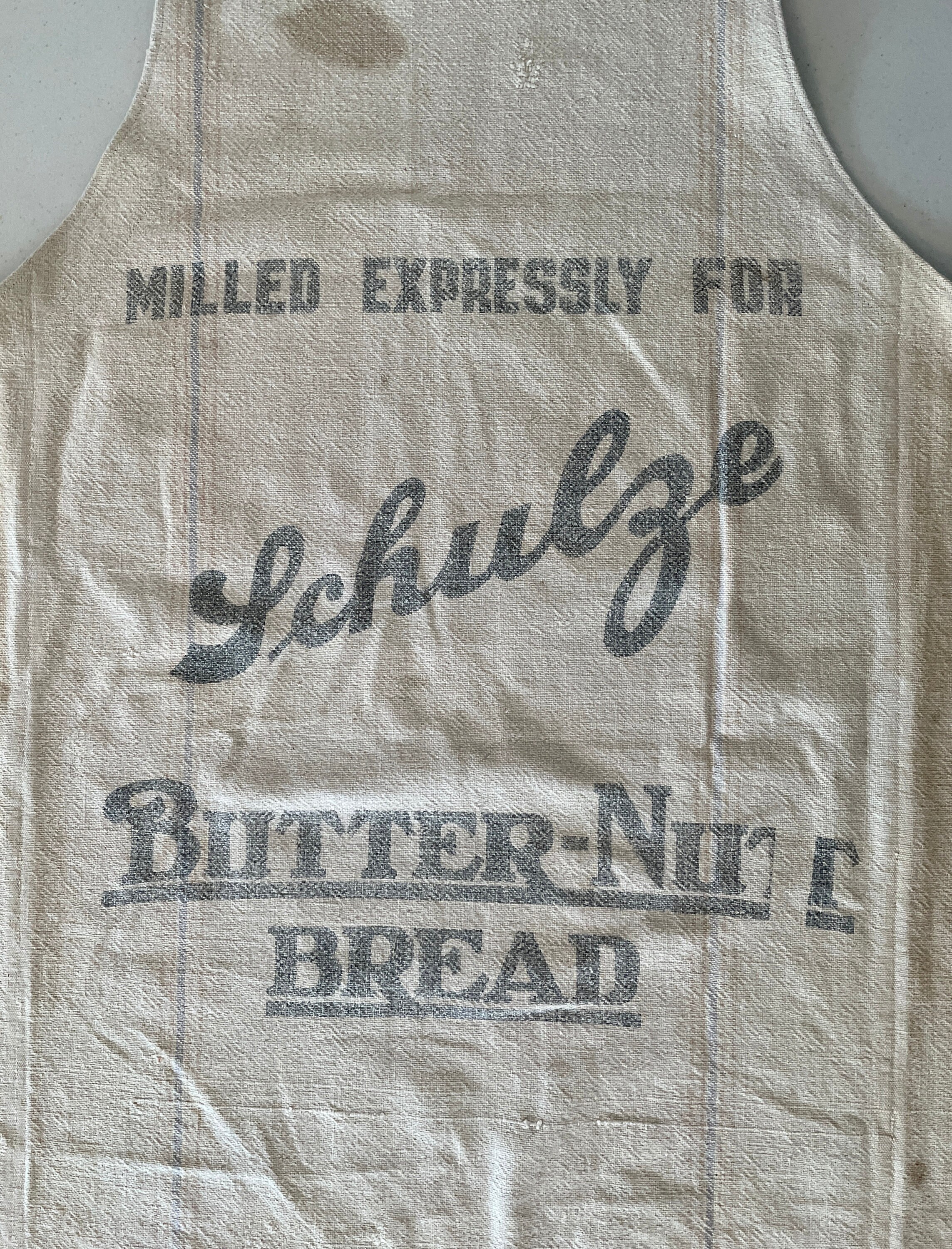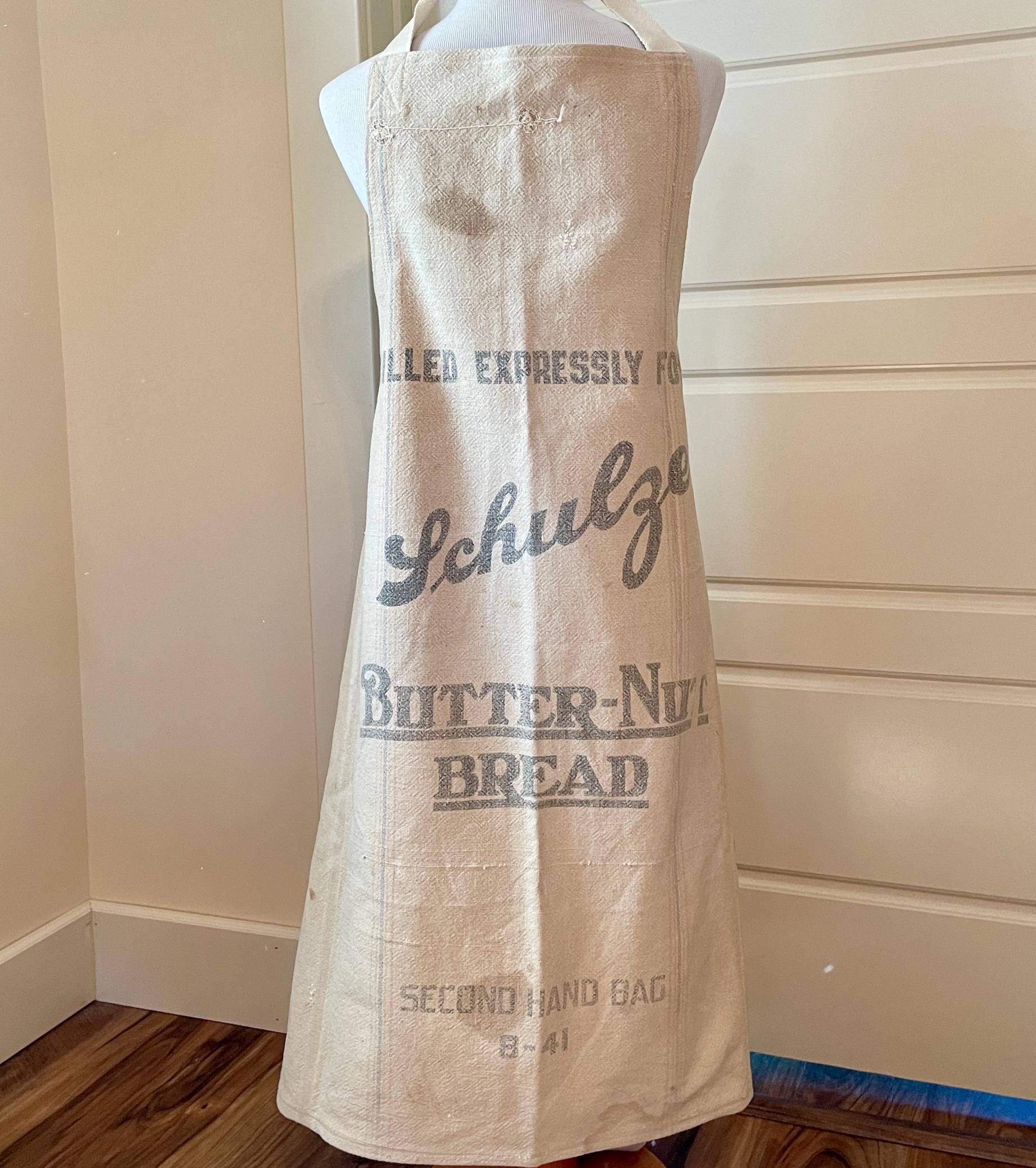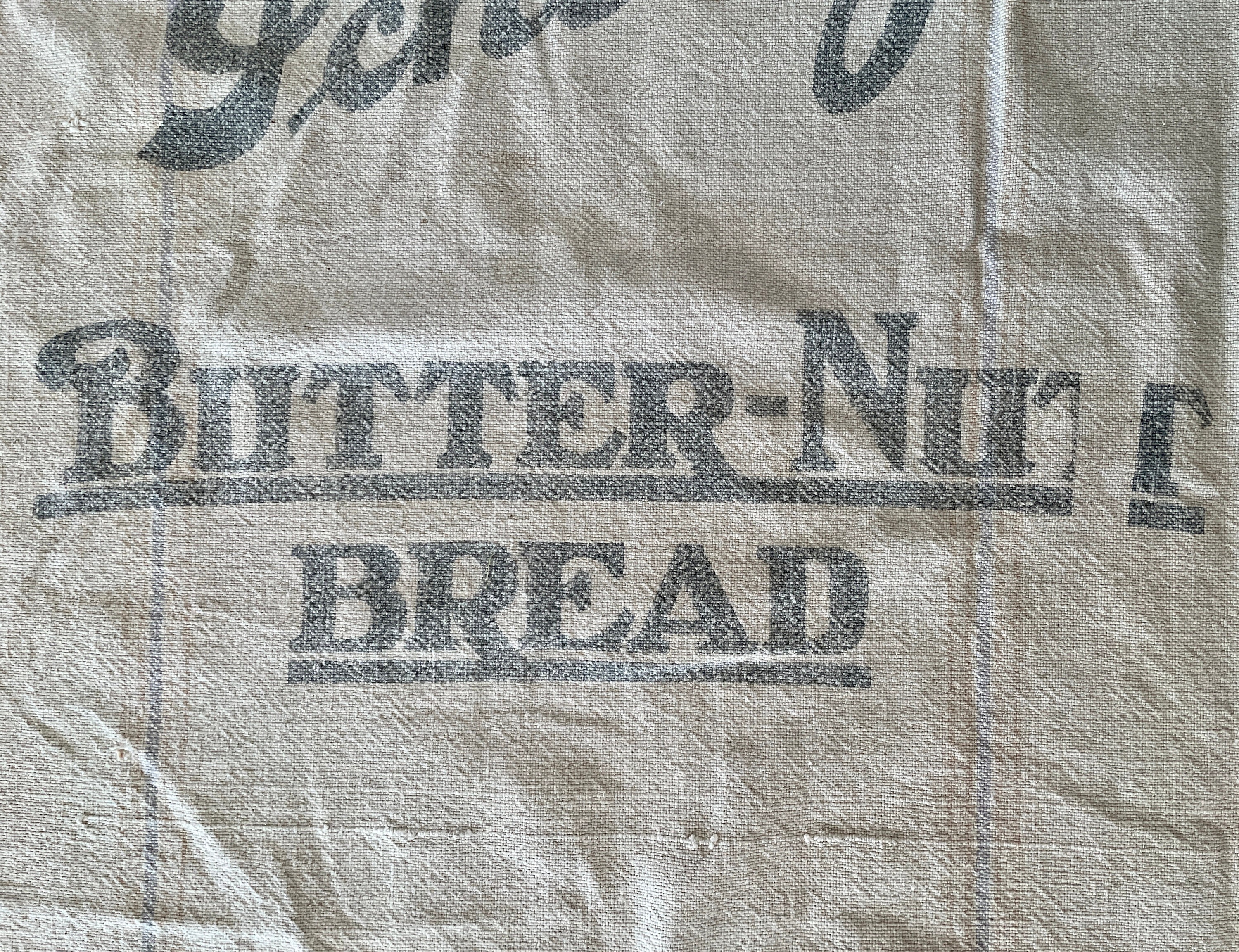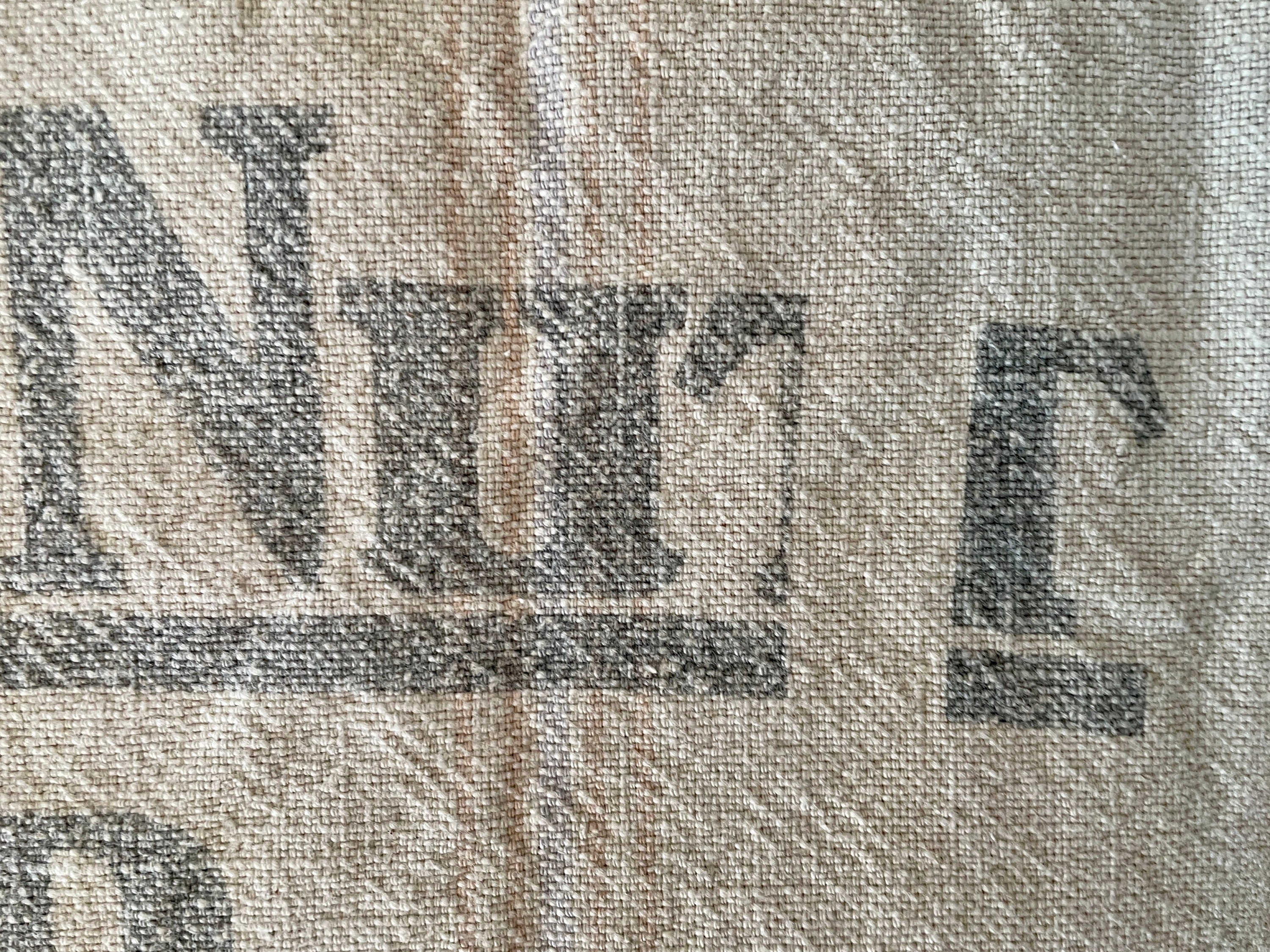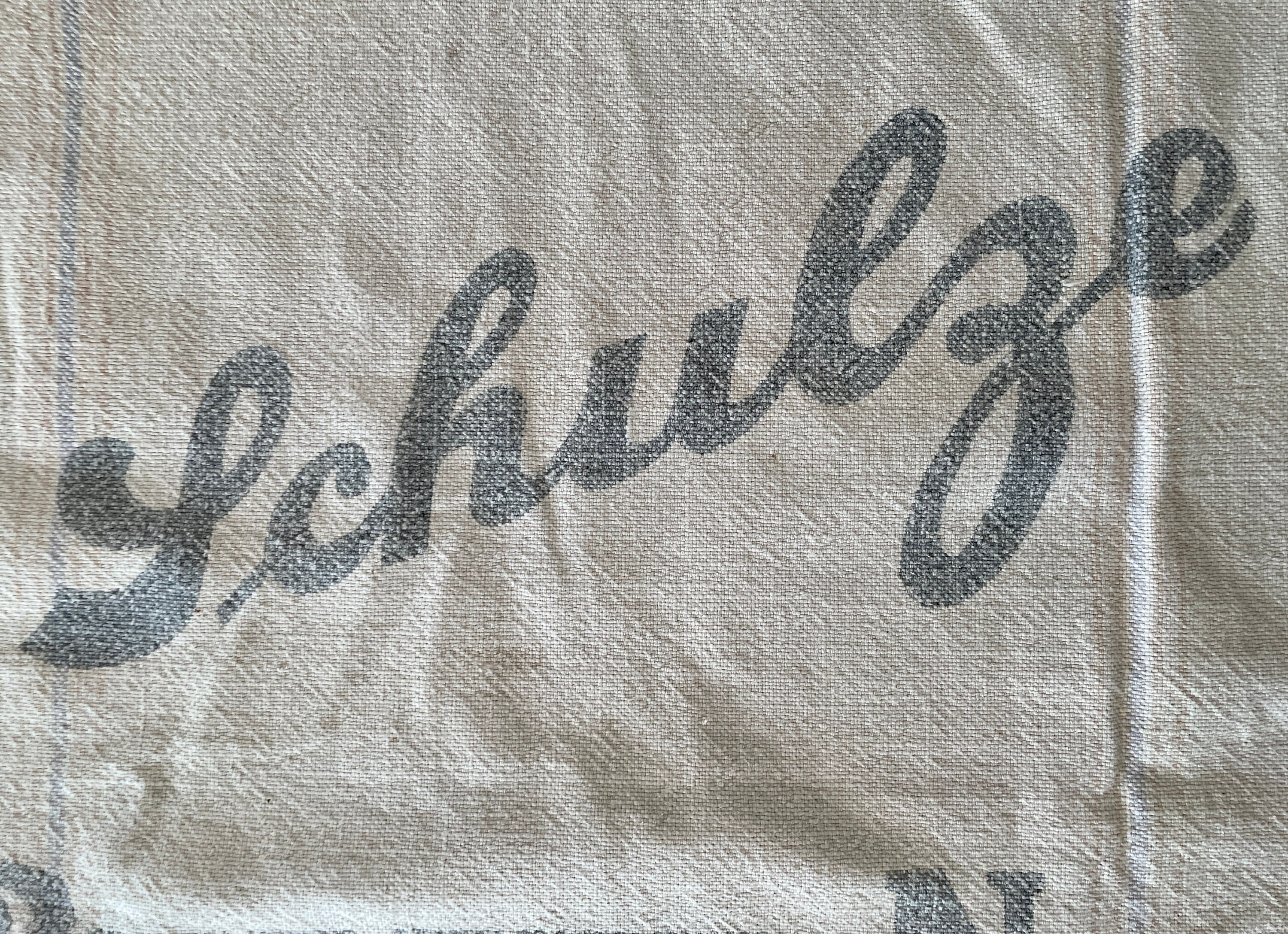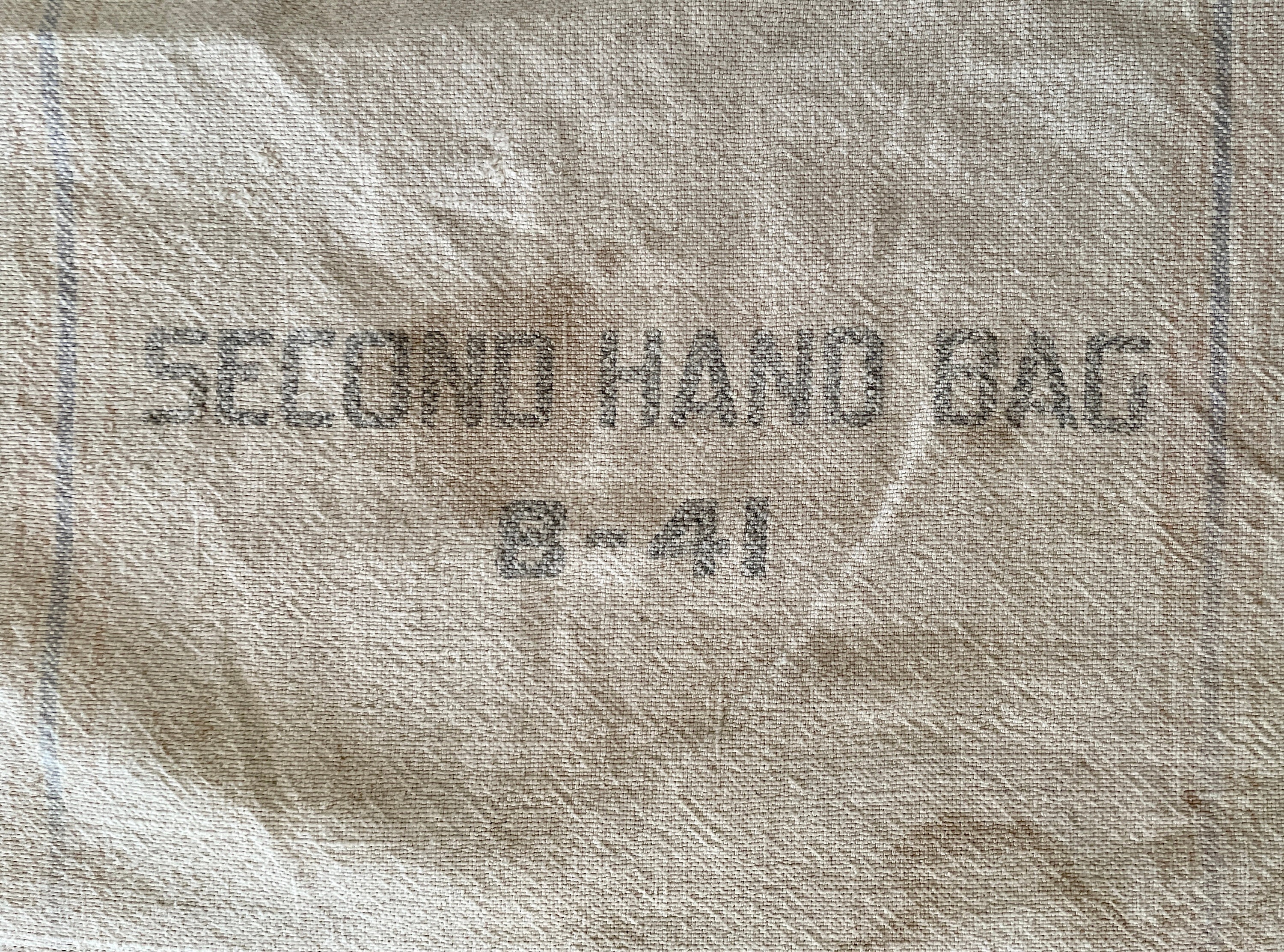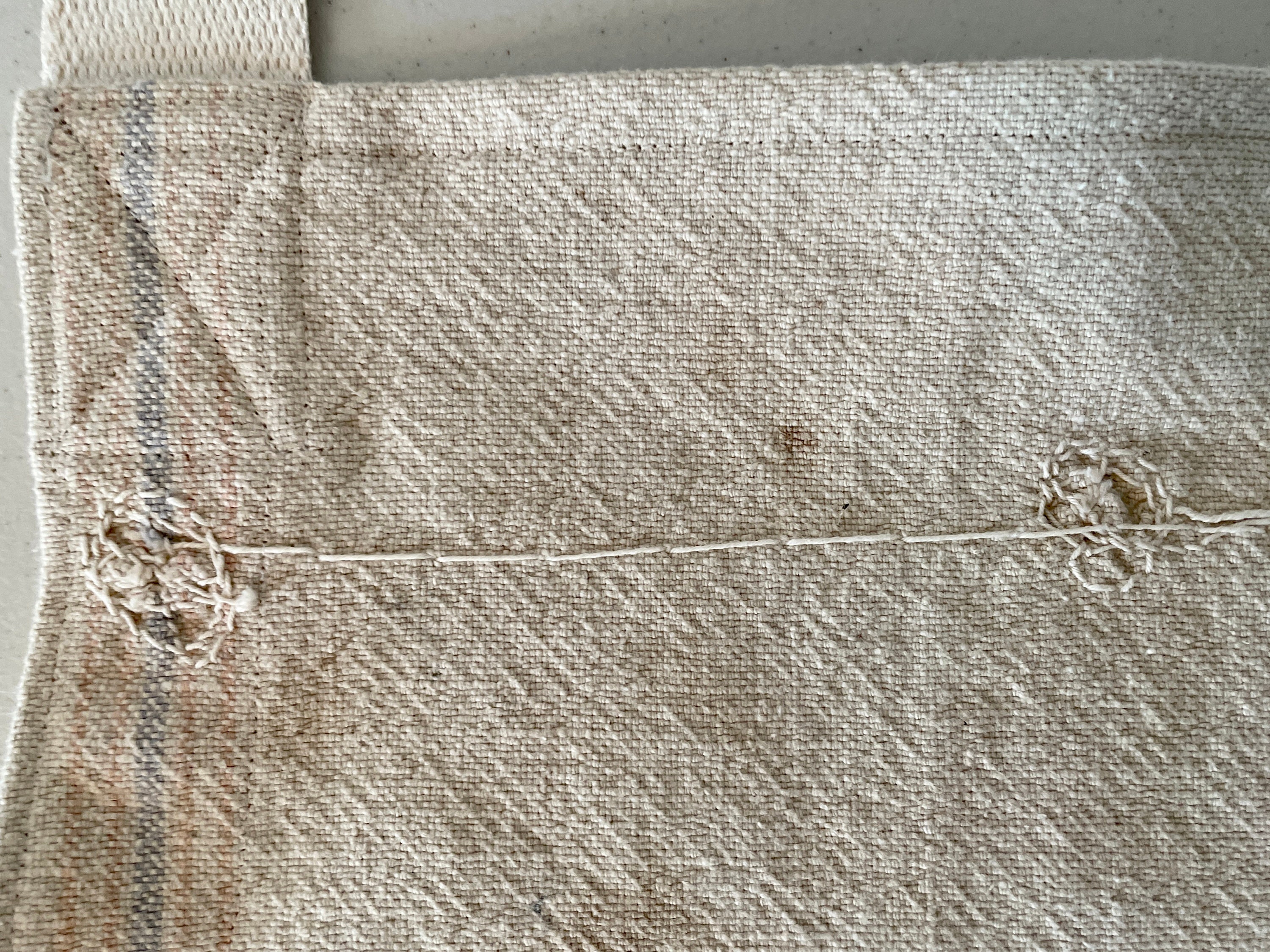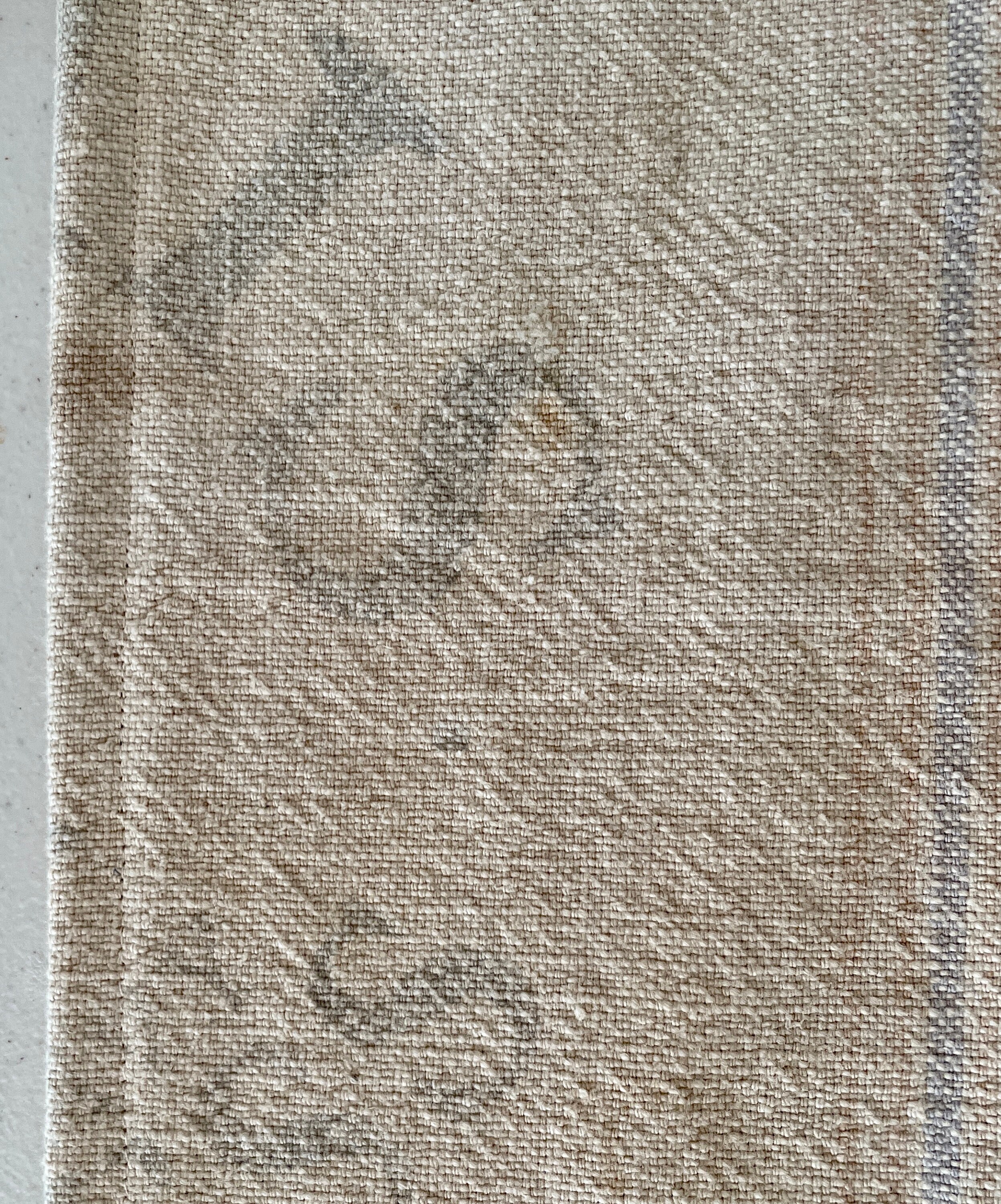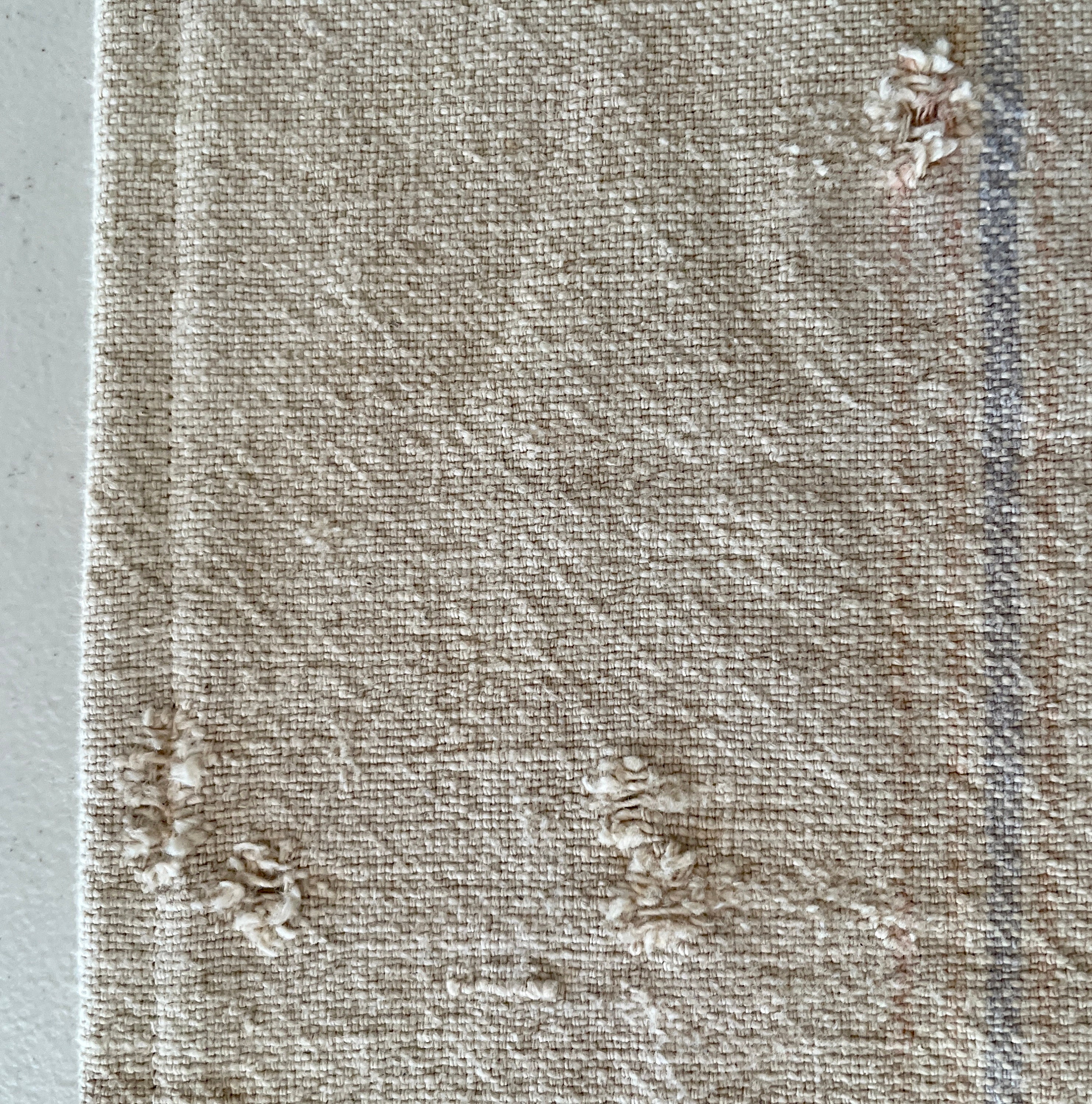Schulze Butter-Nut Bread Apron - One Size
An interesting history is behind the vintage bag used for this apron.
The bag likely held flour for the company that made Butter-Nut Bread. (The history of that company is explained below.) It reads:
Milled Expressly For
Schulze
Butter-Nut Breadpli
Second Hand Bag
8 - 41
The word "Schulze" is written in cursive at an angle. The word "Butter-Nut" had a little glitch in the printing, with the letter T split and a slight line drop.
The apron back is made from the back of the bag -- you can see where there are faded markings of a Bemis Seamless bag. Cotton webbing was used for the neck strap and the waist ties. Cold water wash and line dry are recommended to prevent fading and shrinking.
The apron does have a few issues, including general stains as are typical of this age of sack, as well as some darker spots here and there. There is a dirty area at the top that is more noticeable. The original repairs made to the bag remain, as shown in the photos. There also are several small holes starting that eventually could develop further with frequent washing and wear. Please consider all of these factors before purchase.
The bodice width is 12 1/2 inches.
The waist is 34 inches.
The length is 40 inches from the top bodice center to the hemline.
The waist ties are each 49 inches.
Please use measurements to determine size.
George S. Connelly & Co. began baking bread in 1913 or 1914 in an L-shaped building surrounding the corner of Second and Jefferson streets in Springfield, Illinois. Connelly also had a one-room grocery store later expanding to another room, then adding a meat market and restaurant. He developed a wholesale grocery operation, selling meat, poultry, fruit and vegetables, dairy products and baked goods — in particular, “Butter-Nut” bread.
The Connelly company began baking Butternut/Butter-Nut on Monroe Street about 1904; Connelly apparently licensed the Butternut name from the Schulze Baking Co. of Chicago. Bakery-made bread was safer than that baked at home, Connelly and other bakers argued, because homemade bread too often had unsanitary raw or partially cooked dough in the middle of the loaves.
Connelly Baking Company boosted production after constructing the Jefferson Street building a decade later. A 1916 newspaper advertisement bragged that the public could watch the breadmaking process through the glass front of the bakery at 127 E. Jefferson Street. Butter-Nut was “made clean, baked clean, wrapped clean, sold clean, is clean,” the ad boasted.
Connelly’s operation was turning out 1,000 loaves of bread daily by 1919, when his heirs decided to focus on the retail end of the business. The bakery was sold to the Schulze Bread Co., which announced plans to expand further, while still specializing in the Butternut brand. At the time, Schulze had wholesale bakeries in Chicago, Omaha, Kansas City, Grand Rapids and Cincinnati.
Springfield’s Butternut plant continued to operate into the 1970s. A 1971 Illinois State Journal article said the bakery had 120 employees and distributed bread in a wide area south of Springfield. A Peoria bakery served areas to the north. However, the Springfield plant was landlocked, and Interstate announced that its baking operations would be transferred to Peoria in September 1972. Bread continued to be distributed from Jefferson Street for several more years, but Interstate Brands gradually moved that to sites with better access to highways.
At the Chicago location, the Schulze Baking Company, which eventually became Hostess Brands, churned out loaves of Butternut at 40 E. Garfield Boulevard until 2004. The building became vacant and a plan to convert it into a data center, announced in 2015, was never realized. Though the Schulze building was added to the National Register of Historic Places in 1982, it lacks the protection of Chicago landmark status. With the building recently listed for sale, Preservation Chicago is concerned about further decay of the exterior and interior, as well as the threat of demolition.
* Please keep in mind this apron was created from an authentic vintage cloth sack. Photos show the design and print darker than in actuality. While the apron is described as accurately as possible, due to the vintage quality there may be age marks not noted specifically.
Returns & Exchanges
I don't accept returns, exchanges, or cancellations
But please contact me if you have any problems with your order.
